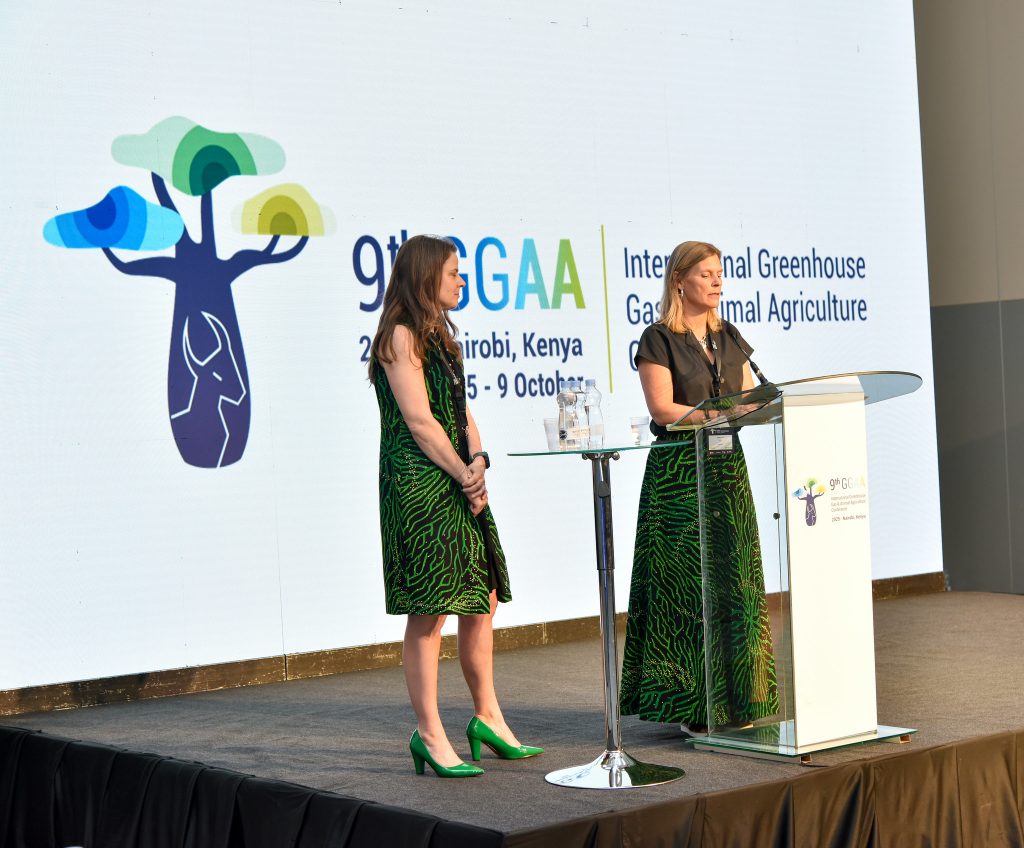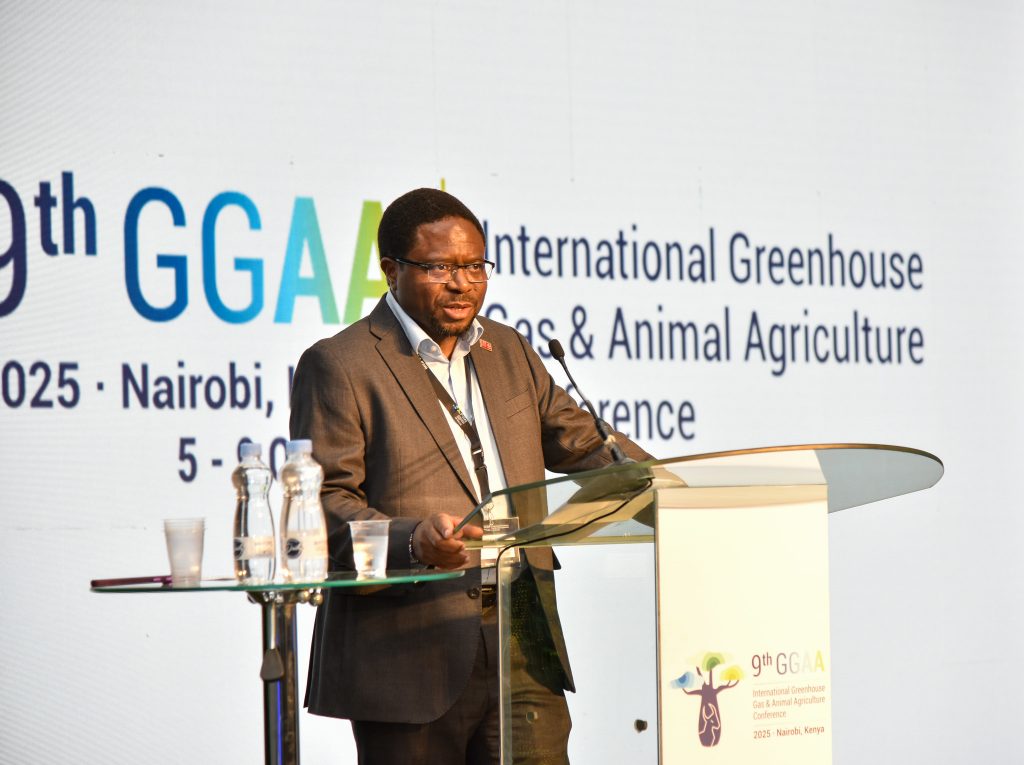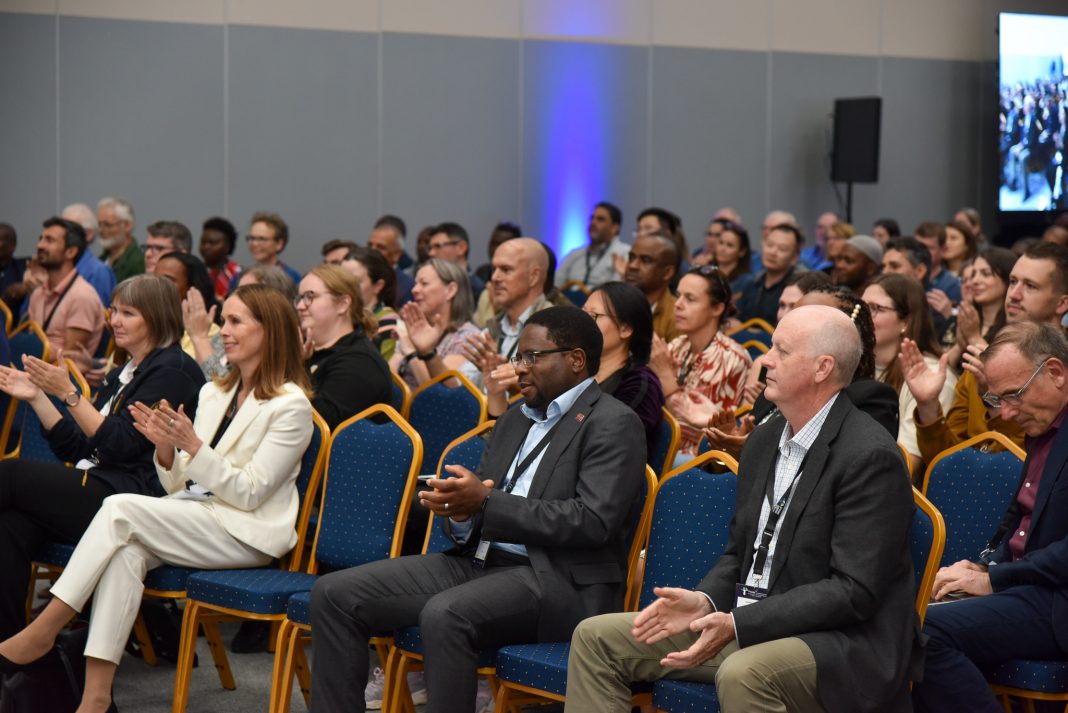By Milliam Murigi
Africa, home to one-third of the world’s livestock, is for the first time hosting the International Greenhouse Gas and Animal Agriculture Conference (GGAA).
The 9th edition of the event, taking place in Nairobi, Kenya’s capital, marks a major step toward inclusive global dialogue on how to reduce emissions from livestock while strengthening food security and rural economies.
Co-hosted by the International Livestock Research Institute (ILRI) and the Norwegian Institute of Bioeconomy Research (NIBIO), the conference has brought together more than 500 leading scientists, policymakers, industry experts, and representatives from civil society. Delegates are discussing how to strike a balance between feeding a growing population and tackling the livestock sector’s contribution to climate change.

“Bringing GGAA to Nairobi is a deliberate and significant move,” said Dr. Claudia Arndt, Senior Scientist at ILRI and Team Leader of the Mazingira Centre.
“Low- and middle-income developing country livestock systems have been under-represented in global climate science. GGAA 2025 changes that. We are showcasing research from low- and middle-income countries, particularly from Africa, where 17 countries are represented. This is where we can forge a sustainable future for the global livestock sector, one that is built on context-specific solutions.”
According to her, hosting GGAA 2025 in Nairobi highlights Africa’s growing role in shaping sustainable livestock solutions. The livestock sector contributes up to 80 percent of GDP in some African countries and provides livelihoods for hundreds of millions of smallholder farmers. However, the sector also accounts for nearly 0.8 gigatons of greenhouse gas emissions annually, making it a critical part of the climate conversation.
Experts note that climate action in livestock production cannot be based on a one-size-fits-all approach. Technologies that work in high-producing systems in Europe or North America—such as feed additives for cows producing up to 50 litres of milk a day—may not be practical for smallholder farmers in Africa, where cows yield only five to six litres. In such systems, the most promising opportunities for reducing emissions lie in improving animal health, feed quality, and genetics to enhance productivity and lower emissions intensity.
At the conference, researchers are presenting evidence that climate-smart livestock practices are already delivering results. Studies show that combining interventions in animal nutrition, breeding, health, and manure management can reduce greenhouse gas emissions from livestock by 20 to 50 percent while increasing productivity and farmer incomes.
Among the innovations being discussed are breeding low-methane livestock through genomic selection, using “exhalomics” technology to measure methane in real time from cow breath, and creating circular manure systems that capture biogas, produce organic fertilizer, and reduce emissions by up to 90 percent. Other presentations focus on disease control models that can lower emissions intensity by as much as 12 percent and forage innovations that both boost yields and cut methane output. Researchers are also exploring digital tools that help farmers track and manage their carbon footprints more effectively.

Academic and policy discussions are addressing key themes including rumen microbial genomics, manure management, greenhouse gas measurement techniques, and the integration of livestock into national climate strategies. The aim is to ensure that scientific advances are translated into practical, farmer-ready solutions that can be scaled up across diverse production systems.






